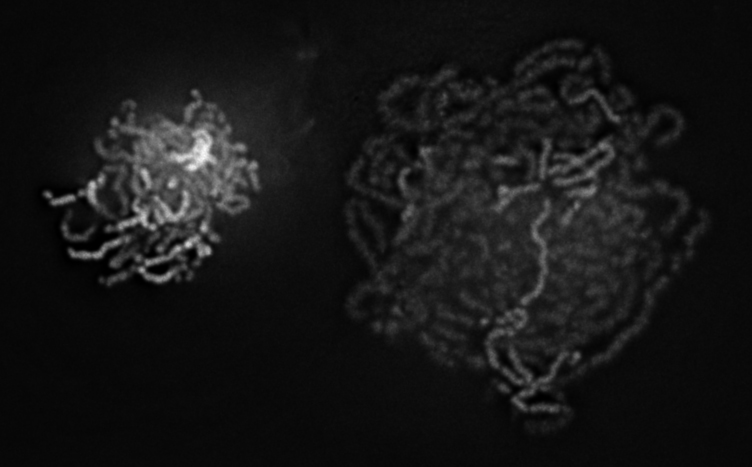Mitotic chromosome assembly despite nucleosome depletion in Xenopus egg extracts
Science. 2017 Jun 23;356(6344):1284-1287. doi: 10.1126/science.aam9702. Epub 2017 May 18.
Shintomi K, Inoue F, Watanabe H, Ohsumi K, Ohsugi M, Hirano T.
Abstract
The nucleosome is the fundamental structural unit of eukaryotic chromatin. During mitosis, duplicated nucleosome fibers are organized into a pair of rod-shaped structures (chromatids) within a mitotic chromosome. However, it remains unclear whether nucleosome assembly is indeed an essential prerequisite for mitotic chromosome assembly. We combined mouse sperm nuclei and Xenopus cell-free egg extracts depleted of the histone chaperone Asf1 and found that chromatid-like structures could be assembled even in the near absence of nucleosomes. The resultant "nucleosome-depleted" chromatids contained discrete central axes positive for condensins, although they were more fragile than normal nucleosome-containing chromatids. Combinatorial depletion experiments underscored the central importance of condensins in mitotic chromosome assembly, which sheds light on their functional cross-talk with nucleosomes in this process.
View article at Science Magazine.
View article on Pubmed.

DNA-stained images of conventional (nucleosome-containing) chromosomes (left) and nucleosome-depleted chromosomes (right). Copyright Keishi Shintomi.
Copyright © 2017 The Authors, some rights reserved; exclusive licensee American Association for the Advancement of Science. No claim to original U.S. Government Works.
Last Updated: 2017-07-25